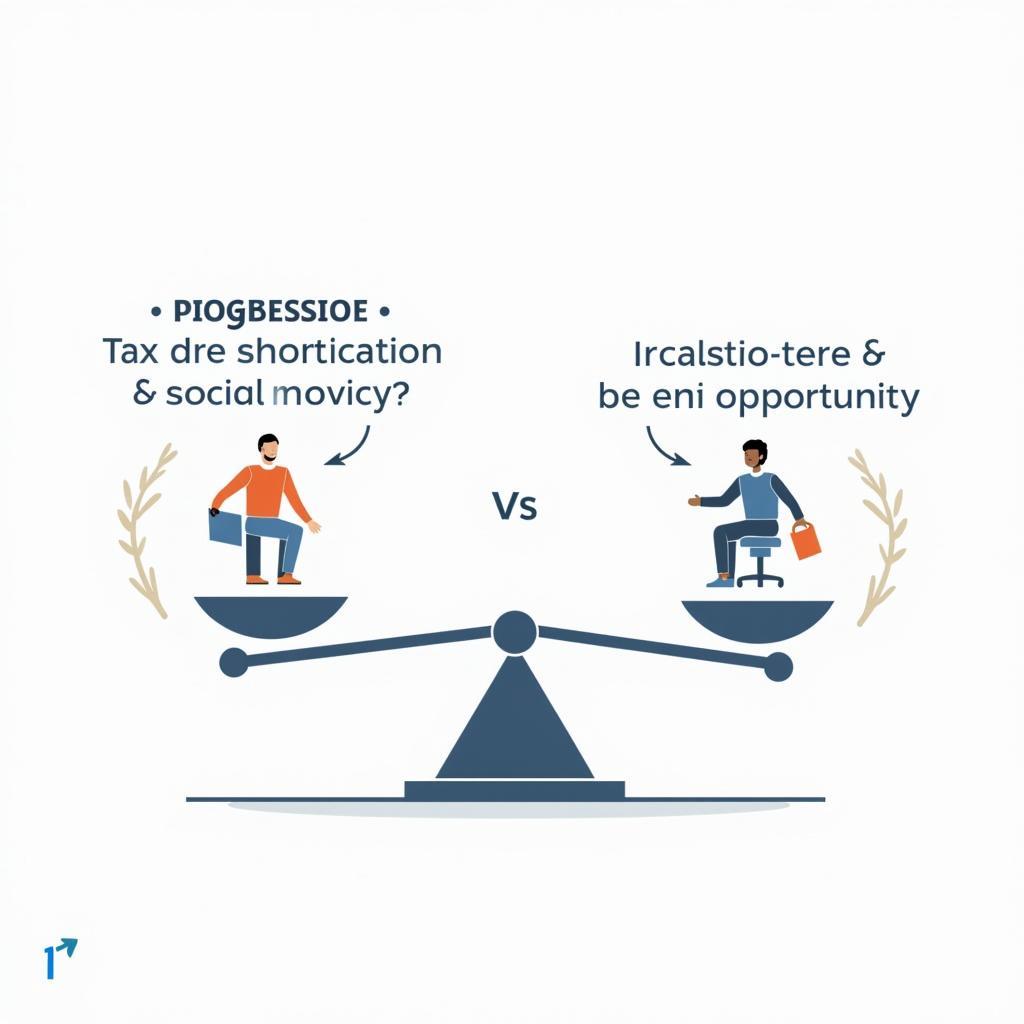Chủ đề tội phạm – trị an và niềm tin công chúng vào cơ quan thực thi pháp luật xuất hiện thường xuyên trong IELTS Writing Task 2, đặc biệt ở các biến thể bàn về giảm tội phạm, vai trò của cảnh sát, camera giám sát và cải cách lực lượng. Với từ khóa chính Importance Of Police Reform For Public Trust, bạn có cơ hội thể hiện tư duy phản biện, lập luận chặt chẽ và vốn từ học thuật. Trong bài viết này, bạn sẽ học:
Nội dung bài viết
- 1. Đề Writing Part 2
- 2. Bài mẫu Band 8-9
- Phân tích Band điểm
- Các yếu tố giúp bài này được chấm điểm cao
- 3. Bài mẫu Band 6.5-7
- Phân tích Band điểm
- So sánh với bài Band 8-9
- 4. Bài mẫu Band 5-6
- Phân tích Band điểm
- Những lỗi sai của bài – phân tích & giải thích
- Cách Cải Thiện Từ Band 6 Lên Band 7
- 5. Từ vựng quan trọng cần nhớ về importance of police reform for public trust
- 6. Cấu trúc câu dễ ăn điểm cao
- 7. Checklist Tự Đánh Giá
- 3 bài mẫu hoàn chỉnh (Band 8-9, 6.5-7, 5-6) kèm phân tích chấm điểm chi tiết theo 4 tiêu chí chính thức.
- Cách phân tích đề, chiến lược lập dàn ý, từ vựng học thuật, cấu trúc câu “ăn điểm”.
- Checklist tự đánh giá và mẹo quản lý thời gian.
Các đề thực hành liên quan đã được xác minh từ nguồn uy tín như IELTS Liz (Crime Essay Questions), IELTS-Blog (Recent IELTS exam questions) và các ngân hàng đề mẫu của British Council/IDP:
- “Some people think the best way to reduce crime is to have more police on the streets. Others believe there are more effective methods. Discuss both views and give your own opinion.” (IELTS Liz – Crime)
- “The use of CCTV cameras in public places is increasing. Do the benefits outweigh the drawbacks?” (IELTS Liz – Technology/Crime)
- “Some people believe the purpose of prison is punishment, while others argue it should focus on rehabilitation. Discuss both and give your opinion.” (IELTS-Blog – Recent Task 2)
Trong phần sau, tôi chọn đề phổ biến nhất để phân tích chi tiết, đồng thời liên hệ trực tiếp đến importance of police reform for public trust để giúp bạn vừa đúng hướng đề vừa tối ưu hóa lập luận.
1. Đề Writing Part 2
Some people think the best way to reduce crime is to have more police on the streets. Others believe there are more effective methods to reduce crime. Discuss both views and give your own opinion.
Dịch đề: Một số người cho rằng cách tốt nhất để giảm tội phạm là tăng sự hiện diện của cảnh sát trên đường phố. Những người khác tin rằng có các phương pháp hiệu quả hơn để giảm tội phạm. Hãy thảo luận cả hai quan điểm và đưa ra ý kiến của bạn.
Phân tích đề bài:
- Dạng câu hỏi: Discuss both views and give your own opinion (thảo luận hai quan điểm và nêu quan điểm cá nhân).
- Yêu cầu cụ thể:
- Trình bày khách quan cả hai phía (more police vs. other methods).
- Kết luận rõ ràng về quan điểm cá nhân và nhất quán với lập luận.
- Thuật ngữ quan trọng:
- “reduce crime”: giảm tội phạm (có thể khai triển qua deterrence, prevention, rehabilitation).
- “more police on the streets”: tăng tuần tra, hiện diện cảnh sát, nhưng có thể mở rộng sang cải cách (reform) để xây niềm tin.
- Lỗi thường gặp:
- Lệch trọng tâm sang hình phạt tù mà bỏ qua vai trò cảnh sát/trị an.
- Thiếu ví dụ cụ thể (community policing, body cameras, oversight).
- Quan điểm cá nhân mờ nhạt hoặc mâu thuẫn với thân bài.
- Cách tiếp cận chiến lược:
- Thân bài 1: Lợi ích của tăng cảnh sát (răn đe, phản ứng nhanh) + hạn chế (chi phí, có thể làm xói mòn niềm tin nếu thiếu cải cách).
- Thân bài 2: Phương pháp khác (giáo dục, phúc lợi, công nghệ, cải cách cảnh sát để xây trust) + lập luận vì sao bền vững hơn.
- Kết luận: Cân bằng – nhấn mạnh importance of police reform for public trust như điều kiện cần để mọi giải pháp hiệu quả.
2. Bài mẫu Band 8-9
Một bài Band 8-9 cần: quan điểm rõ ràng, phát triển ý sâu, ví dụ thực tiễn, từ vựng học thuật đa dạng, cấu trúc câu linh hoạt, mạch lạc cao.
Bài luận (khoảng 300 từ, tiếng Anh):
While deploying more officers on the streets can deter opportunistic crime and enable swifter responses, it is neither a silver bullet nor a sustainable strategy in isolation. Visible policing may reassure citizens in the short term; however, without robust accountability and community engagement, a heavier police presence can inadvertently deepen mistrust and reduce cooperation, which are indispensable for long‑term safety.
 Hình ảnh cảnh sát cộng đồng đang tương tác thân thiện với người dân, thể hiện tầm quan trọng của cải cách để xây dựng niềm tin.
Hình ảnh cảnh sát cộng đồng đang tương tác thân thiện với người dân, thể hiện tầm quan trọng của cải cách để xây dựng niềm tin.
Proponents argue that uniformed patrols create a deterrent effect, disrupt criminal routines, and increase arrest rates. There is some truth to this: when officers are nearby, offenders face higher perceived risks. Yet such benefits plateau if policing is perceived as arbitrary or heavy‑handed. In diverse communities, aggressive stop‑and‑search tactics, deployed without transparent oversight, may erode public trust and make witnesses less willing to report crimes.
By contrast, the most durable reductions in crime tend to flow from strategies that address root causes and reform how policing itself is conducted. Investments in early‑years education, youth employment, and mental‑health services reduce the pipeline into offending. Equally crucial is police reform: clear use‑of‑force standards, body‑worn cameras, independent complaint mechanisms, and community policing that builds rapport rather than fear. These measures increase transparency and accountability, encouraging residents to share information and co‑produce safety. In other words, the importance of police reform for public trust is not ancillary but foundational: trust is the glue that makes other interventions stick.
In my view, simply adding more officers is, at best, an adjunct to a broader prevention agenda. Policymakers should combine targeted patrols in high‑risk areas with evidence‑based social programmes and meaningful reform within police institutions. When the public believes the police are fair, restrained, and responsive, cooperation rises, intelligence improves, and crime falls for the right reasons—not merely because people feel watched, but because they feel protected.
Phân tích Band điểm
| Tiêu chí | Band | Nhận xét |
|---|---|---|
| Task Response (Hoàn thành yêu cầu) | 8.5 | Bài thảo luận đầy đủ hai phía, nêu rõ quan điểm cá nhân, phát triển ý sâu về prevention và reform. Ví dụ cụ thể (body cameras, oversight) củng cố luận điểm. |
| Coherence & Cohesion (Mạch lạc & Liên kết) | 8.5 | Bố cục 4 đoạn rõ ràng, chủ đề câu dẫn xuất sắc, liên kết logic qua từ nối nguyên nhân–hệ quả. Tránh lặp ý; kết luận quay lại luận điểm “trust”. |
| Lexical Resource (Từ vựng) | 8.5 | Từ vựng học thuật đa dạng: accountability, deterrent effect, heavy‑handed, co‑produce safety. Collocations chính xác; dùng paraphrase linh hoạt. |
| Grammatical Range & Accuracy (Ngữ pháp) | 8.0 | Câu phức, mệnh đề quan hệ, non-finite clauses sử dụng tự nhiên; dấu câu đúng. Có cấu trúc nhấn mạnh và so sánh; không lỗi nghiêm trọng. |
Các yếu tố giúp bài này được chấm điểm cao
- Luận điểm trung tâm mạch lạc: “trust as foundation” lặp lại có chủ đích nhưng không sáo rỗng.
- Sử dụng ví dụ thực tiễn có tính “policy” (use‑of‑force, body‑worn cameras) để cụ thể hóa ý.
- Cân bằng giữa lợi–hại của “more police” trước khi đưa giải pháp tối ưu.
- Collocations chuẩn học thuật: transparent oversight, root causes, targeted patrols.
- Câu chủ đề mạnh, mở–kết tương phản nhưng thống nhất.
- Sử dụng từ nối ý nghĩa (by contrast, equally crucial, in other words) hợp ngữ cảnh.
- Lập luận theo chuỗi nguyên nhân–hệ quả rõ ràng, dễ theo dõi.
 Cận cảnh một sĩ quan cảnh sát đang đeo camera gắn trên người (body camera) trong lúc làm nhiệm vụ, nhấn mạnh tính minh bạch.
Cận cảnh một sĩ quan cảnh sát đang đeo camera gắn trên người (body camera) trong lúc làm nhiệm vụ, nhấn mạnh tính minh bạch.
3. Bài mẫu Band 6.5-7
Đặc điểm: đáp ứng đề, có quan điểm rõ, lập luận hợp lý nhưng chưa sâu, từ vựng/gram chưa thật tinh tế, đôi lúc lặp từ.
Bài luận (260+ từ, tiếng Anh):
Some people believe that putting more police on the streets is the fastest way to reduce crime. This can work to some extent, because visible officers make petty criminals think twice and help respond to incidents sooner. However, if this approach is not combined with clear rules and fair treatment, communities may feel watched rather than protected, which can damage cooperation.
On the other hand, there are many methods that tackle the causes of crime. Better schools, affordable housing and support for young people can keep them away from gangs. In addition, improving how the police work is also important. For example, body cameras and independent reviews of complaints can increase transparency. When people see that officers are accountable, they are more willing to share information, and this makes investigations easier.
In my opinion, a balanced plan is best. Cities can use more patrols in high‑risk areas, but they should also invest in prevention and basic police reform, such as better training in communication and de‑escalation. This combination builds safer streets in the long term. Therefore, while more police may reduce crime temporarily, long‑term success depends on public trust, which grows when policing is seen as fair.
Phân tích Band điểm
| Tiêu chí | Band | Nhận xét |
|---|---|---|
| Task Response (Hoàn thành yêu cầu) | 7.0 | Trả lời đủ hai phía và có quan điểm rõ. Lập luận hợp lý nhưng ví dụ còn chung chung, chưa phân tích sâu tác động dài hạn. |
| Coherence & Cohesion (Mạch lạc & Liên kết) | 7.0 | Bố cục rõ ràng, chuyển đoạn hợp lý. Một số ý nối còn đơn giản, liên kết nội bộ đoạn chưa thật “mượt”. |
| Lexical Resource (Từ vựng) | 6.5 | Dùng được thuật ngữ chủ đề (body cameras, independent reviews). Tuy nhiên, lặp từ (police, crime) và collocations chưa đa dạng. |
| Grammatical Range & Accuracy (Ngữ pháp) | 6.5 | Câu phức có sử dụng, ít lỗi nhỏ. Cấu trúc chưa thật linh hoạt; thiếu các cấu trúc nhấn mạnh/đảo ngữ. |
So sánh với bài Band 8-9
- Độ sâu lập luận: Bài 8-9 phân tích “trust as foundation” với chuỗi giải pháp cụ thể; bài 6.5-7 dừng ở mức liệt kê hợp lý.
- Từ vựng: Bài 8-9 dùng collocations giàu sắc thái (heavy‑handed, co‑produce safety); bài 6.5-7 dùng cụm đơn giản hơn.
- Cấu trúc câu: Bài 8-9 linh hoạt (mệnh đề nhấn mạnh, so sánh đối lập); bài 6.5-7 chủ yếu câu đơn/câu ghép.
 Các phương pháp phòng chống tội phạm hiệu quả như đầu tư vào giáo dục, hỗ trợ việc làm và các chương trình dành cho thanh thiếu niên.
Các phương pháp phòng chống tội phạm hiệu quả như đầu tư vào giáo dục, hỗ trợ việc làm và các chương trình dành cho thanh thiếu niên.
4. Bài mẫu Band 5-6
Đặc điểm: có ý nhưng phát triển chưa đều; lỗi ngữ pháp, mạo từ/giới từ; từ vựng còn cơ bản; liên kết rời rạc.
Bài luận (250+ từ, tiếng Anh; làm nổi bật lỗi):
Many people think putting more police on streets will reduce crime quickly. It can help in some cases, but it is not always the best. If police appear everywhere, some citizens feel uncomfort and they do not want to talk with officers. Also, more patrols is expensive cost for the city.
Other methods can be more effective. Education and jobs make young people busy and not join crimes. Government should give a support for families and build more cameras in public. Cameras can record crimes and people are afraid from doing illegal actions. Besides, police need a reform to be more friendly and have good communication with community. If there is transparent, public will trust them and they can share information.
In my opinion, we need both more police and other solutions. But we should not only focus on number of police. We must make police work better and people trust them. When trust increase, crime will go down because people cooperate and criminals know the city is strong.
Phân tích Band điểm
| Tiêu chí | Band | Nhận xét |
|---|---|---|
| Task Response (Hoàn thành yêu cầu) | 5.5 | Nêu được hai phía và quan điểm, nhưng thiếu ví dụ thuyết phục; lập luận khái quát. |
| Coherence & Cohesion (Mạch lạc & Liên kết) | 5.5 | Có các đoạn rõ ràng nhưng ý nối còn lỏng; lặp ý; từ nối đơn giản. |
| Lexical Resource (Từ vựng) | 5.5 | Từ vựng cơ bản, nhiều collocation sai (expensive cost, a reform). Dùng sai giới từ. |
| Grammatical Range & Accuracy (Ngữ pháp) | 5.0 | Lỗi mạo từ, số ít/số nhiều, tính từ/danh từ; cấu trúc câu đơn giản, một số lỗi thì/đồng thuận chủ-vị. |
Những lỗi sai của bài – phân tích & giải thích
| Lỗi sai | Loại lỗi | Sửa lại | Giải thích |
|---|---|---|---|
| uncomfort | Từ loại | uncomfortable | “Uncomfortable” là tính từ; “uncomfort” không dùng trong ngữ cảnh này. |
| more patrols is | Chia động từ | more patrols are | “Patrols” số nhiều → động từ “are”. |
| expensive cost | Collocation | high cost / costly | “Expensive cost” là thừa nghĩa; dùng “high cost” hoặc tính từ “costly”. |
| a support | Mạo từ/danh từ không đếm được | support | “Support” không đếm được trong nghĩa chung, không dùng “a”. |
| afraid from | Giới từ | afraid of | Cấu trúc đúng: “afraid of”. |
| a reform | Mạo từ | reforms / reform measures | Với nghĩa chung, dùng số nhiều hoặc cụ thể hóa “reform measures”. |
| good communication with community | Collocation | good communication with the community / build rapport with the community | Cần mạo từ “the”; “build rapport” là collocation tự nhiên. |
| If there is transparent | Từ loại/cấu trúc | If there is transparency | “Transparency” là danh từ cần dùng ở đây. |
Cách Cải Thiện Từ Band 6 Lên Band 7
- Mở rộng collocations chuẩn: “build public trust”, “independent oversight”, “use‑of‑force policy”.
- Thêm ví dụ cụ thể, có bằng chứng lý luận (ví dụ: “body‑worn cameras can improve complaint resolution rates”).
- Đa dạng hóa cấu trúc câu: mệnh đề quan hệ, cụm phân từ, câu điều kiện loại hỗn hợp.
- Kiểm soát lỗi cơ bản: mạo từ, số ít/số nhiều, giới từ; dùng checklist trước khi nộp.
- Paraphrase thông minh tránh lặp từ “police”, “crime” (law enforcement, offending, public safety).
5. Từ vựng quan trọng cần nhớ về importance of police reform for public trust
| Từ/Cụm từ | Loại từ | Phiên âm | Nghĩa | Ví dụ & Collocations |
|---|---|---|---|---|
| police reform | noun | /pəˈliːs rɪˈfɔːrm/ | cải cách cảnh sát | Effective police reform can rebuild public trust. Collocations: meaningful/substantive reform |
| public trust | noun | /ˈpʌblɪk trʌst/ | niềm tin công chúng | Public trust increases when policing is transparent. Collocations: build/erode trust |
| accountability | noun | /əˌkaʊn.təˈbɪl.ə.ti/ | trách nhiệm giải trình | Body cameras enhance accountability. Collocations: ensure/strengthen accountability |
| oversight | noun | /ˈoʊvərˌsaɪt/ | giám sát độc lập | Independent oversight prevents abuse. Collocations: independent/robust oversight |
| community policing | noun | /kəˈmjuːnəti pəˈliːsɪŋ/ | cảnh sát cộng đồng | Community policing builds rapport. Collocations: implement/practice community policing |
| de-escalation | noun | /ˌdiː ˌeskəˈleɪʃn/ | hạ nhiệt xung đột | De-escalation training reduces use of force. Collocations: de-escalation training/techniques |
| transparency | noun | /trænˈspærənsi/ | minh bạch | Transparency fosters cooperation. Collocations: promote/increase transparency |
| use-of-force policy | noun | /ˌjuːs əv ˈfɔːrs ˈpɑːləsi/ | chính sách sử dụng vũ lực | Clear use-of-force policy is essential. Collocations: clear/strict policy |
| deterrence | noun | /dɪˈtɜːrəns/ | răn đe | Visible patrols create deterrence. Collocations: general/specific deterrence |
| recidivism | noun | /rɪˈsɪdɪvɪzəm/ | tái phạm | Education can reduce recidivism. Collocations: reduce/curb recidivism |
| due process | noun | /ˌduː ˈprɑːses/ | thủ tục tố tụng đúng luật | Due process protects citizens’ rights. Collocations: ensure/respect due process |
| build rapport | verb phrase | /ræˈpɔːr/ | xây dựng thiện cảm | Officers build rapport with residents. Collocations: build/maintain rapport |
| independent review | noun | /ˌɪndɪˈpendənt rɪˈvjuː/ | đánh giá độc lập | Complaints need independent review. Collocations: conduct/submit to review |
| disproportionate | adj | /ˌdɪsprəˈpɔːrʃənət/ | không tương xứng | Disproportionate force damages trust. Collocations: disproportionate response |
| zero‑tolerance | noun/adj | /ˌzɪəroʊ ˈtɑːlərəns/ | không khoan nhượng | Zero‑tolerance can backfire. Collocations: zero‑tolerance policy |
 Infographic trực quan hóa các từ vựng quan trọng về cải cách cảnh sát và niềm tin công chúng như accountability, transparency, oversight.
Infographic trực quan hóa các từ vựng quan trọng về cải cách cảnh sát và niềm tin công chúng như accountability, transparency, oversight.
6. Cấu trúc câu dễ ăn điểm cao
- Câu phức với mệnh đề phụ thuộc
- Công thức: Mệnh đề chính + liên từ phụ thuộc (because/although/while/if…) + mệnh đề phụ.
- Ví dụ (trích bài Band 8-9): Although visible policing may reassure citizens, without robust accountability it can deepen mistrust.
- Vì sao ghi điểm: Thể hiện khả năng diễn đạt quan hệ nhân quả/nhượng bộ.
- Ví dụ bổ sung: While patrols deter petty crime, they rarely address root causes. If oversight is weak, abuses may go unpunished.
- Lỗi thường gặp: Thiếu dấu phẩy sau mệnh đề phụ đứng đầu câu; dùng “because of” với mệnh đề.
- Mệnh đề quan hệ không xác định (non-defining relative clause)
- Công thức: Danh từ, which/who + mệnh đề bổ sung, …
- Ví dụ: These measures increase transparency, which encourages residents to share information.
- Ghi điểm: Bổ sung thông tin, mạch lạc cao, dấu phẩy đúng.
- Ví dụ bổ sung: Community policing builds rapport, which improves intelligence. Body cameras record interactions, which protects both sides.
- Lỗi: Quên dấu phẩy; dùng “that” thay “which” trong mệnh đề không xác định.
- Cụm phân từ (participial phrases)
- Công thức: V-ing/V-ed + cụm bổ sung, …
- Ví dụ: Encouraging residents to co‑produce safety, reform strengthens trust.
- Ghi điểm: Cô đọng, tự nhiên, tăng tính học thuật.
- Ví dụ bổ sung: Designed to deter crime, patrols can calm hotspots. Backed by evidence, these policies gain support.
- Lỗi: Lủng chủ ngữ (dangling participles); chia sai V-ing/V-ed.
- Câu chẻ (Cleft sentences)
- Công thức: It is/was + thành phần nhấn mạnh + that/who + mệnh đề.
- Ví dụ: It is trust that makes other interventions stick.
- Ghi điểm: Nhấn mạnh luận điểm trọng tâm.
- Ví dụ bổ sung: It is transparency that drives cooperation. It is training that reduces excessive force.
- Lỗi: Dùng “that” sai; lạm dụng khiến văn nặng nề.
- Câu điều kiện nâng cao
- Công thức: If + hiện tại đơn, will/can + V; hoặc If + should/had…, đảo ngữ với should/had.
- Ví dụ: If policing is perceived as heavy‑handed, cooperation will fall.
- Ghi điểm: Dự báo, lập luận nhân–quả rõ.
- Ví dụ bổ sung: If reforms are meaningful, reporting rates can rise. Should oversight fail, public trust may collapse.
- Lỗi: Nhầm thì; dùng “will” ở mệnh đề If.
- Đảo ngữ nhấn mạnh
- Công thức: Only by/Not until/Never + trợ động từ + chủ ngữ + động từ.
- Ví dụ: Only when the public believes the police are fair does cooperation rise.
- Ghi điểm: Tạo nhịp văn mạnh, tăng tính thuyết phục.
- Ví dụ bổ sung: Never has transparency been more crucial. Not until reforms are implemented will trust return.
- Lỗi: Quên đảo trợ động từ; dùng sai thì.
 Một học sinh đang ngồi học, sắp xếp các khối cấu trúc ngữ pháp để xây dựng một bài luận IELTS Writing Task 2 vững chắc.
Một học sinh đang ngồi học, sắp xếp các khối cấu trúc ngữ pháp để xây dựng một bài luận IELTS Writing Task 2 vững chắc.
7. Checklist Tự Đánh Giá
- Trước khi viết:
- Xác định rõ dạng bài (Discuss both + opinion).
- Ghi 2-3 luận điểm chính cho mỗi phía; liên hệ importance of police reform for public trust.
- Lên dàn ý 4 đoạn, gạch đầu dòng ví dụ cụ thể.
- Trong khi viết:
- Viết câu chủ đề rõ ràng cho mỗi đoạn.
- Dùng collocations học thuật; tránh lặp “police/crime” liên tục.
- Kết nối bằng từ nối phù hợp (by contrast, consequently, notably).
- Sau khi viết:
- Kiểm tra mạo từ (a/an/the), số ít/số nhiều, thì, giới từ.
- Soát lỗi collocation (expensive cost → high cost).
- Đảm bảo quan điểm nhất quán; kết luận quay lại “trust”.
- Quản lý thời gian:
- 2-3 phút phân tích đề + 5 phút dàn ý.
- 25-28 phút viết.
- 4-5 phút soát lỗi/cải thiện từ nối.
- Gợi ý luyện tập: Viết lại thân bài 2 với trọng tâm khác (CCTV, youth programs) để đa dạng hóa ý tưởng. Xem thêm: [internal_link: bài mẫu IELTS Writing Task 2 về Crime & Punishment]
 Một học sinh đang sử dụng checklist để tự rà soát và đánh giá bài luận IELTS Writing Task 2 của mình trước khi nộp bài.
Một học sinh đang sử dụng checklist để tự rà soát và đánh giá bài luận IELTS Writing Task 2 của mình trước khi nộp bài.
Tổng kết lại, chủ đề crime–policing cho phép bạn thể hiện tư duy chiến lược: thay vì chỉ “tăng quân số”, hãy chứng minh vì sao importance of police reform for public trust là điều kiện cốt lõi khiến giải pháp khác phát huy tác dụng. Bạn đã có trong tay 3 bài mẫu theo dải band 5-9, phân tích chấm điểm, bảng từ vựng, 6 cấu trúc câu “ăn điểm” và checklist tự soát. Con đường cải thiện rõ ràng: luyện dàn ý nhanh, làm giàu collocations chủ đề, viết câu chủ đề sắc nét, và luôn gắn luận điểm với “trust–accountability–transparency”.
Hãy luyện viết một đề tương tự mỗi ngày, đăng trong cộng đồng để nhận phản hồi, và đối chiếu với checklist ở trên. Với 4–6 tuần luyện tập nghiêm túc, bạn có thể nâng 0.5–1.0 band ở Task 2. Tài nguyên bổ sung: danh sách Crime Essay Questions (IELTS Liz), Recent Task 2 Topics (IELTS-Blog), và hướng dẫn viết của British Council/IDP. Quan trọng hơn cả, hãy nhớ: mạch lạc, ví dụ cụ thể và kiểm soát lỗi cơ bản chính là “đòn bẩy” điểm số của bạn.

